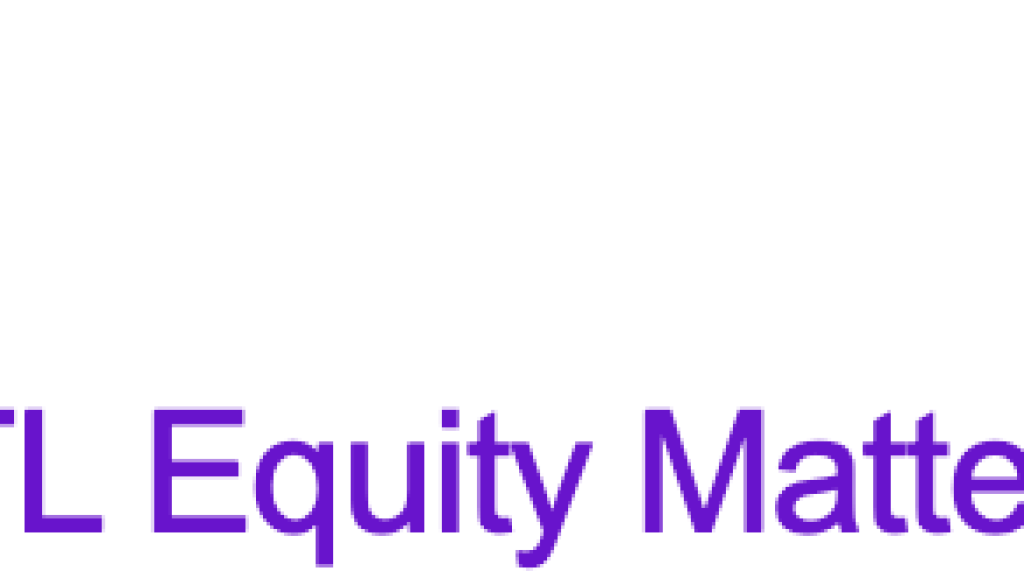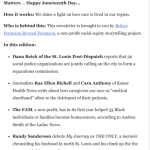
Welcome to the fifth edition of our newsletter:
STL Equity Matters Jan. 25, 2022
How it works: We are here to shine a light on how race is lived in our region. We look back, we look ahead, and we are very much in the now.
Who is behind this: This newsletter is brought to you by Before Ferguson Beyond Ferguson, a non-profit racial equity storytelling project.
In this edition:
Brandon Ford, a Gen Z person of color, writes about what it’s like to get stopped by police in Creve Coeur.
Erika Whitfield reflects on COVID-interruptus as an educator and parent.
Laura Horwitz, co-founder of We Stories, testifies before a Missouri House committee considering measures that take dead aim at diversity in children’s literature.
Sylvester Brown, journalist, discusses difficulties covering COVID in marginalized communities.
| BFBF Founders Dick Weiss and Sally Altman will talk about new initiatives for the racial equity storytelling project with Paul Wagman, host of a zoom forum sponsored by Central Reform Congregation. Time: 7:30 p.m., Thursday, January 27. Sign up here to register and get your ZOOM link. |
| 1. Close encounters of the Creve Coeur kind |

| Thought bubble: Ever wonder what goes through the mind of a young Black driver who is stopped by police? Brandon Ford takes you there. On a summer night: When I found a patrol car following me and signaling me to pull over about 10:30 that night, I called my father.“Dad, the police are driving behind me and I’m scared.”“Where are you?”“I’m close to the Walgreens near home.”“Okay, stay calm. I’m on my way.”I was scared because I’m Black. I had begun contemplating what it would take to stay alive. He took too long to pull over: The police were angry because I hadn’t stopped immediately. I explained that I had been frightened. The cops – both white, one man and one woman – could not grasp what was going through my mind … the deaths of Michael Brown (2014 in Ferguson), Terence Crutcher (2016 in Tulsa) and George Floyd (2020 in Minneapolis) were all at the hands of the police. With those stories in mind, I would not pull over until I could find a well-lit place where other civilians might witness whatever was going to happen in this encounter. Truth and consequences: Learn what happened to Brandon. |
2. Between Covid & a hard place

What’s happening: Classes resumed early this month across the region — but only kinda sorta. With Omicron raging, some schools went virtual, others reimposed mask requirements. Confusion reigned. Caught in the middle: Teachers, especially those who are also parents. Like me. Day 1: As we head out the door to our morning commute, my son, Jordan, complains that he doesn’t feel well. His stomach hurts. Jordan is not the kind of kid who doesn’t want to go to school. What on earth should I do? Tons of my colleagues are out sick due to COVID. It’s the first thing in the morning on the first day back from holiday break.Are stomach aches a symptom of COVID? There are no easy decisions here. Learn what Erika decided and how she has navigated through the first month of school. |
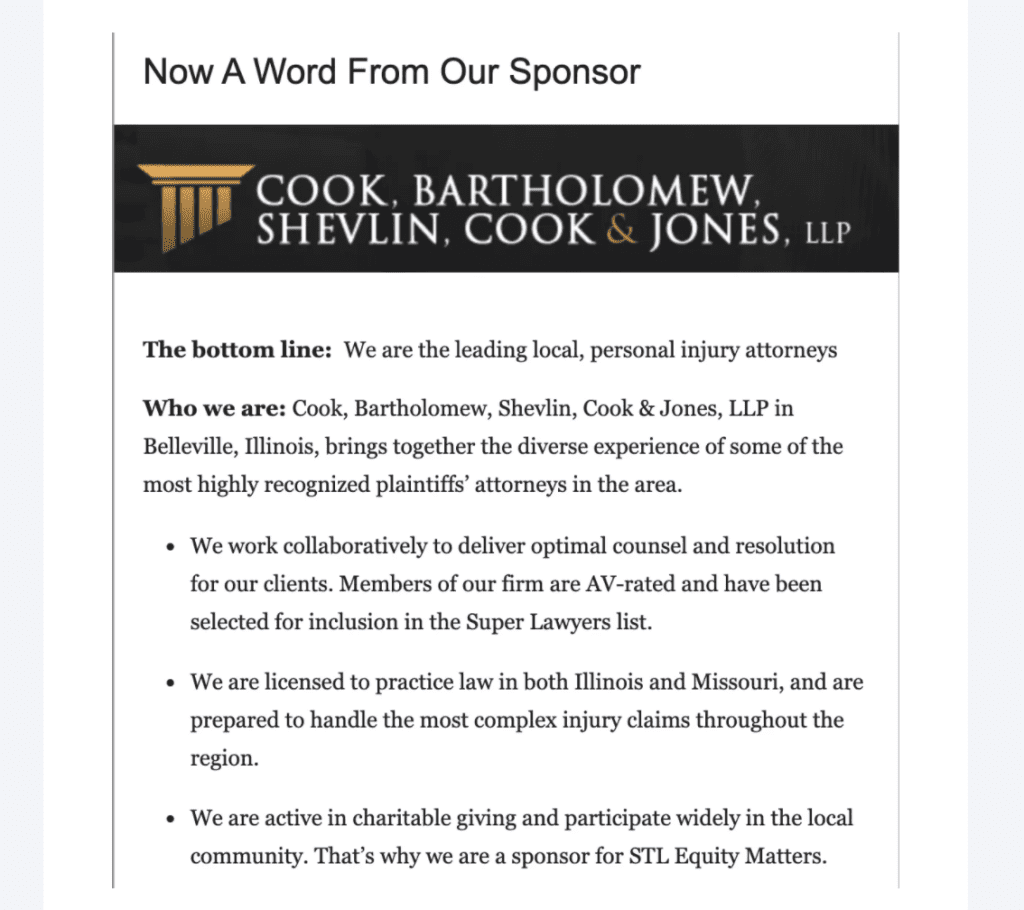
3. What are we afraid of?
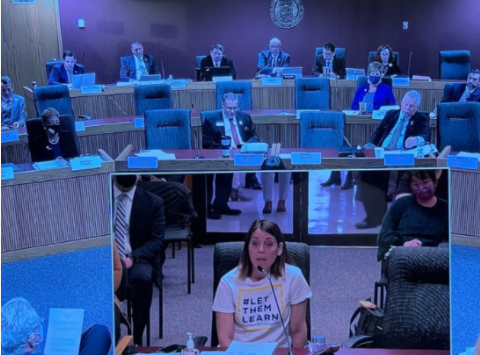
| What’s happening: The Missouri House is considering sweeping measures that would assert control over how school districts handle curriculum around race and diversity. Pushback: Laura Horwitz, co-founder of We Stories was among a record-topping 1,600 people who filed testimony regarding HB 1474 and HB 1995. Horwitz said, “One of the biggest myths about the purpose of conversations about racism is that the goal is to identify good and bad white people, to assign blame and guilt, or to absolve oneself of those feelings by reading all the right books and saying all the right things. Nothing could be further from the truth of my experience. ”What could happen?: “What I see in this bill (HB 1474) is that fear writ large,” Horwitz said, “that white parents and their children might encounter ideas that challenge them and… then what? What would happen? What are we so afraid of?” The bottom line: “There are far too few stories shared about what comes after fear, what comes after discomfort and how positive conversations about race can be for white folks, how whole having a more developed understanding of racism can make us, how humanizing being in real community across racial lines can be.” Go deeper: Read the transcript of Horwitz’s testimony (500 words, reading time 2 minutes.) Wentzville School District bans Toni Morrison’s The Bluest Eye. |
4. Ask Syl: The COVID coverage conundrum
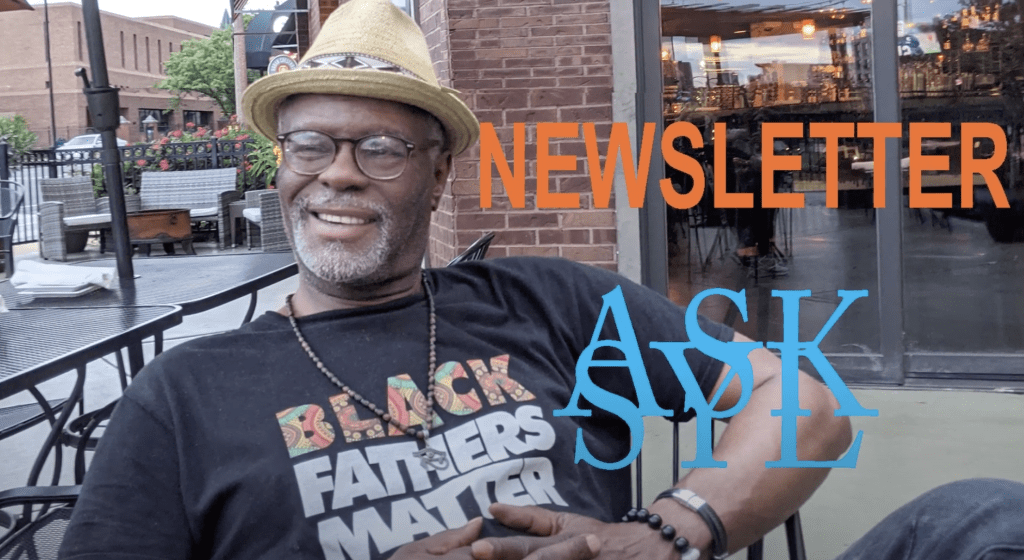
| Question: “How has COVID affected journalism as a Black man in an already disadvantaged arena? Has it been easier to get the scoop or harder? Has it made journalists more inclined to follow pure truth stories even harder? Syl responds: Overall, I’ve found that black folk aren’t anxious to put their business out on the street. A first assignment with Before Ferguson Beyond Ferguson had me interviewing a single mother of two children who lived in the Preservation Square apartment complex.Initially, she was cooperative and gave me a surprisingly honest, no-holds-barred narrative of her life as a low-income single mom trying to deal with COVID. But then she ghosted me, not returning my calls for follow-up questions. I figured she had second thoughts about providing her blunt commentary. On the other hand: Once I get some people talking, I’ve found that I can make them comfortable enough to share some great and oftentimes personal information with me. I think it’s a matter of building trust, which humbles me and makes me appreciate my role as a down-to-earth Black writer. Deciphering the gray areas: I do my best to present the truth about the pandemic and dispel all the rumors and social media misinformation. But I’ve come to understand that the mistrust sown by the medical system is a real thing that needs to be addressed if we are to survive this epidemic and get a handle on health disparities in poor neighborhoods. Go deeper: Syl’s thoughts on how journalists can navigate in underserved neighbors. |
5. Remembrance of a lynching
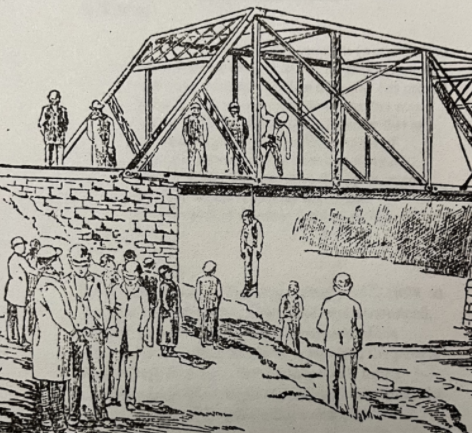
| What’s happening: The Reparative Justice Coalition of St. Louis held a gathering in Valley Park to remember the January 1894 lynching of John Buckner. Background: (provided by RJCSTL) A mob seized Mr. Buckner from jail on Jan. 17, 1894, and brought him to an iron bridge that spanned the Meramec River outside of Valley Park. There, Mr. Buckner was hanged from the bridge and abandoned leaving his lifeless body as a traumatizing public spectacle all too familiar to Black people in America during this era of racial terror. Why revisit The past?: “The Equal Justice Initiative has documented more than 4,400 racial terror lynchings in the United States during the period between Reconstruction and World War II so that our nation might begin to confront the legacy of this racial terror,” said Geoff Ward, an RJCSTL organizer who spoke at the remembrance in Buder Park. “These legacies are evident in our schools, in neighborhood violence, in health disparities, and many other contexts, but perhaps most pronounced in our criminal justice system today.” Action: Participants collected soil from the site of the lynching and placed it in jars provided by the Equal Justice Initiative. These jars will be displayed in various memorial exhibits: in EJI’s Legacy Museum in Montgomery, Alabama, at the Griot Museum here in St Louis, and in the Missouri Community Remembrance Project Exhibit at the Black Archives of Mid-America in Kansas City. Go deeper: More about the Reparative Justice Coalition’s work in St. Louis. |

6. What we are reading & watching
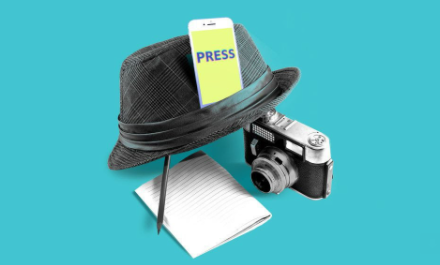
| Banker Orvin Kimbrough sees networking as key to diversity. David Nicklaus in the St. Louis Post-Dispatch St. Louis activist Brittany Packnett featured (along with Anita Hill) in PBS’s Finding Your Roots. New CEO Kwofe Coleman says The Muny should reflect all of St. Louis. Jeremy D. Goodwin at St. Louis Public Radio Vernon Mitchell, the city’s new chief equity officer to focus on data. Dana Rieck in the St. Louis American |
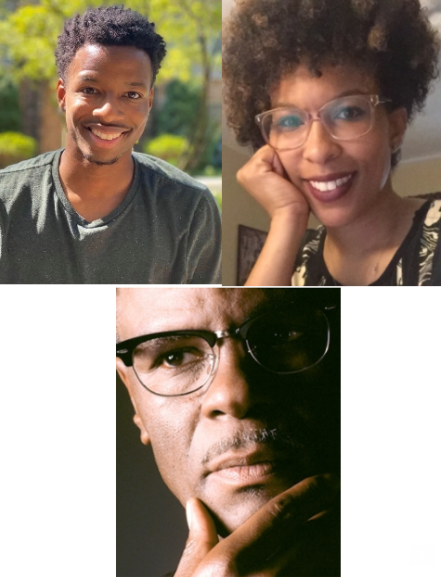
| Contributors to this newsletter: Brandon Ford (top left), Erika Whitfield, and Sylvester Brown. Click on a name to get a bio. Please share: Forward this newsletter to your friends. Send them to our website beforefergusonbeyondferguson.org to become a subscriber. |

